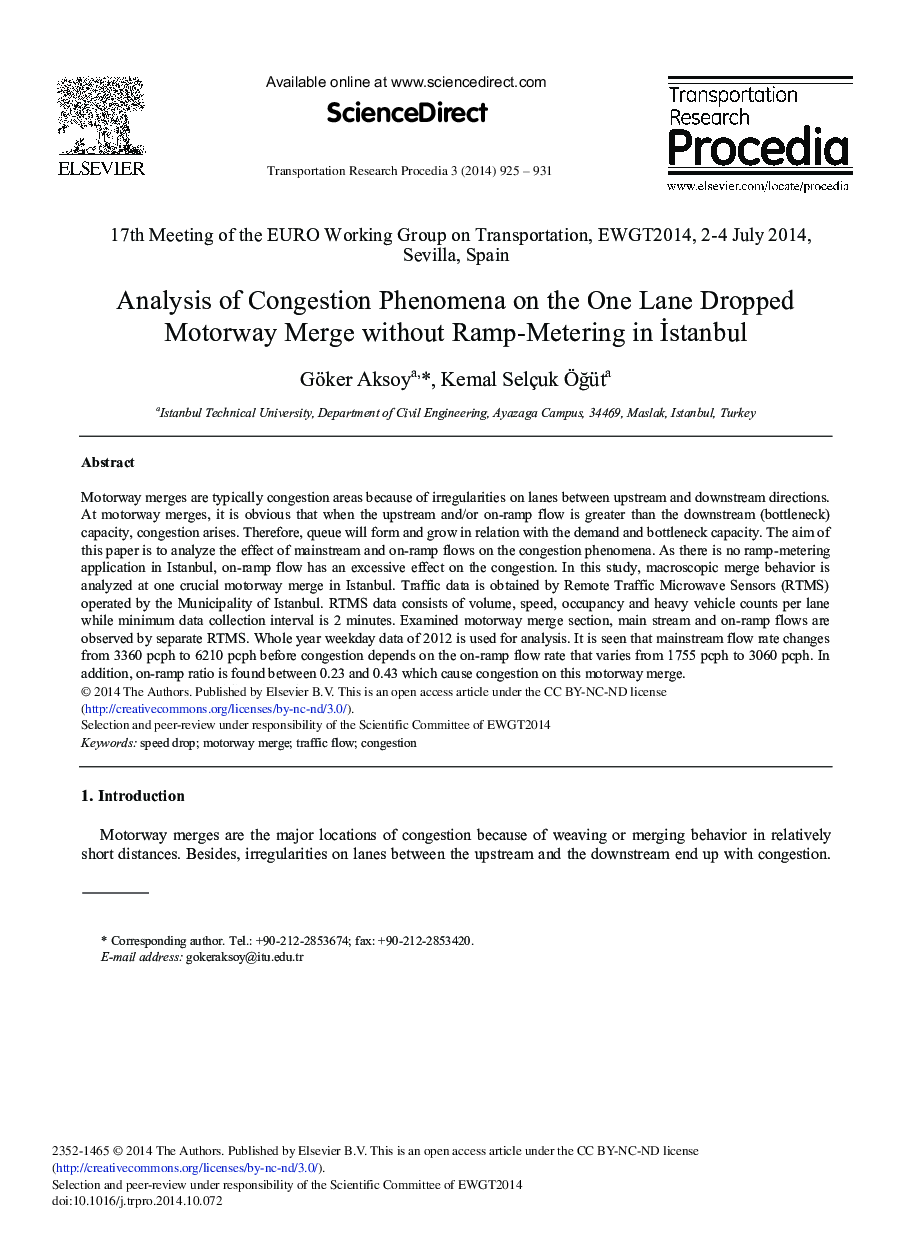| Article ID | Journal | Published Year | Pages | File Type |
|---|---|---|---|---|
| 1106473 | Transportation Research Procedia | 2014 | 7 Pages |
Motorway merges are typically congestion areas because of irregularities on lanes between upstream and downstream directions. At motorway merges, it is obvious that when the upstream and/or on-ramp flow is greater than the downstream (bottleneck) capacity, congestion arises. Therefore, queue will form and grow in relation with the demand and bottleneck capacity. The aim of this paper is to analyze the effect of mainstream and on-ramp flows on the congestion phenomena. As there is no ramp-metering application in Istanbul, on-ramp flow has an excessive effect on the congestion. In this study, macroscopic merge behavior is analyzed at one crucial motorway merge in Istanbul. Traffic data is obtained by Remote Traffic Microwave Sensors (RTMS) operated by the Municipality of Istanbul. RTMS data consists of volume, speed, occupancy and heavy vehicle counts per lane while minimum data collection interval is 2 minutes. Examined motorway merge section, main stream and on-ramp flows are observed by separate RTMS. Whole year weekday data of 2012 is used for analysis. It is seen that mainstream flow rate changes from 3360 pcph to 6210 pcph before congestion depends on the on-ramp flow rate that varies from 1755 pcph to 3060 pcph. In addition, on-ramp ratio is found between 0.23 and 0.43 which cause congestion on this motorway merge.
